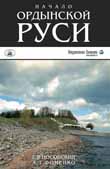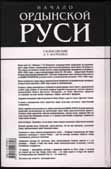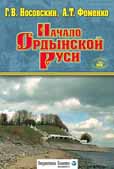

 Publishing house: AST-ASTREL Moscow, 2008.
Publishing house: AST-ASTREL Moscow, 2008.
CONTENTS
Chapter 1.
THE RECENTLY FOUND BY US NEW REFLECTIONS OF CHRIST AND JOHN THE BAPTIST IN THE HISTORY OF RUSSIA AND "ANTIQUE" ROME.
1. Introduction.
2. The ancient pictures, an authentic sense of which becomes clear now from the point of our results.
3. The history of Russian princes Haskuldr and Dir allegedly of the IX century is a one more, although foggy, reflection of the history of tsar Andronicus - Christ.
4. The death of prince Oleg – it is one more reflection of the history of Christ on the pages of the Russian chronicles.
5. Antonius and Cleopatra. The evangelic events in the book of "antique" Plutarch.
6. The history of "antique" Cicero is a fractional reflection of the history of John the Baptist.
7. Clodius as one more reflection of John the Baptist by Plutarch.
8. Cicero in "The history" of Nicetas Khoniates is described as Alexios Branas.
9. A worship of Cicero by the first Christians.
10. If the books of John the Baptist are presented in the Bible?
11. Russian prince Igor as a fractional reflection of Christ.
12. Obtaining of the Real God?s Cross by Helen, the mother of Konstantin the Great and crucifixion of Helen=Olga, a wife of Igor-Horus. Three revenges for the death of Igor-Horus.
13. The siege and capture of Tsar-Grad by the Crusaders in 1204 is reflected in the Russian chronicles as the capture of Iskorosten by Olga, and in the version of Homer – the capture of Troy by the Greeks.
Chapter 2.
THE TROJAN WAR OF THE XIII CENTURY AS A REVENGE FOR THE CRUCIFIXION OF CHRIST IN 1185 IN TSAR-GRAD.
1. Introduction.
2. A fleece of the Golden Aries and Christ-Aries.
3. The Argonauts. Jason and Christ.
4. A reason of the Trojan war. The kidnaping of Helen in the Trojan war – this is a capture of the tsar power, "The mount of Olives", in Jerusalem.
5. "Iliad" of Homer about the offence of Chryst at the beginning of the Trojan war.
6. The floating of the Crusaders to Tsar-Grad and the floating of Greeks to Troy. Beginning of the Trojan war.
7. Boats in exchange to a share in the campaign.
8. Am antediluvian among the commanders of "antique" Greeks and an antediluvian among the commanders of Crusaders.
9. Argues between the commanders of "antique" Greeks and argues between the commanders of the Crusaders.
10. Two campaigns of "antique" Greeks and two campaigns of the Crusaders.
11. The first battle of the Crusaders near Tsar-Grad and "a battle near the boats", described by Homer.
12. Beykoz-Calvary near Tsar-Grad and "a burial mound of ancient Ilos" near Troy.
13. Tsar-Grad of the XIII century, like "antique" Troy was defended by the united armed forces.
14. The oath of Achilles "with a tree, which the priests of Zeus bear" – it is an oath of a Crusader.
15. A cover of the God?s mother in description of Homer.
16. A prayer of Achilles to Zeus by means of a cup with wine – the Christian Mystery of the Eucharist.
17. Achilles-Balduin-Svyatoslav – the main hero of the Trojan war, which is the Crusade of 1204.
18. An attempt of "antique" Trojans to burn the boats of Greeks and an attempt of the Byzantines to burn the fleet of Latins.
19. The thrown from the tower last imperator of Tsar-Grad of the previous dynasty and the thrown from a wall last successor of the Trojan tsar Priam.
20. A plunder and destruction of the walls of Tsar-Grad and "antique" Troy.
21. A refusal to take money.
22. A violation of the agreement.
23. An outreach of cross by Foulques of Paris – it is an outreach of Christianity by Paul the Apostle.
24. Traces of the appeals of Paul the Apostle for the Crusade.
25. A revenge of Patroclus in the history of the Trojan war – this is a revenge for Christ in the history of the Crusade of 1204.
26. Olympic games in honor of Christ.
27. Troy was captured at the time of tsar David, who is Christ.
Chapter 3.
THE "ANTIQUE" TSAR – TROJAN AENEAS ARRIVES TO RUSSIA-HORDE IN THE XIII CENTURY. HIS GRANDSONS – ROMULUS AND REM – FOUND HERE "ITALIAN ROME", THAT IS THE GREAT = "MONGOL" EMPIRE.
1. A short story of the Trojan Aeneas and "The Aeneid" of Vergil.
2. Short contents of the Aeneid.
3. The Aeneid actually starts with a tale about the childhood of Christ.
4. At the beginning of the "antique" Aeneid it is told about the last days of Christ, his Resurrection and Ascension.
5. In the third book of the Aeneid it is told, in particular, about the crucifixion of Christ on the Calvary.
6. An order of God Phoebus-Apollo to float to the powerful country Hesperia-Italy.
7. The fleet of Aeneas arrives to the country, where, probably, in winter it is very cold and snowstorms take place.
8. Other traced of the North in the description of floating of Aeneas.
9. "The antique" river Tiber, described in the Aeneid, it is, probably, the Russian Volga. Then the name Tiber was moved to Italy.
10. Beginning of the travelling of Aeneas around Russia.
11. A legend about the foundation of Carthage by tsarina Dido.
12. A continuation of the travelling of Aeneas around Russia.
13. Aeneas appears in Tartar-Tartaria-Tataria. Gold and power. Even gods are afraid of Tartar.
14. At the same time, in description of Vergil, Tartar-Tartaria is a favored, "paradise" country.
15. Fire guns and muskets on the battlefields in the "antique" Aeneid.
16. The city of Alba on the river Tiber and the city of Yaroslavl on the Volga. A white pig and thirty sucking her white piggies.
17. Aeneas founds a city. A prophesy about restauration of the Great Empire by Aeneas and his descendants. The death of Aeneas.
18. The famous she-wolf, who feed Romulus and Rem, and the Russian river Volga, which "feed" brothers Ivan and Georgy Danilovichs, the founders of the Great = "Mongol" Empire.
Chapter 4.
RESTAURATION OF THE EMPIRE. ITS NEW CENTER IS IN RUSSIA.
1. Introduction.
2. Arrival of the founder of the Russian-Hordian dynasty Aeneas-John-Assur-Nimrod-Bele-Ryurik to Russia from burning Tsar-Grad = Troy.
3. Tsar Aeneas – a founder of the Russian Horde dynasty.
4. An appeal of the Varangians to Russia.
5. Aeneas in the Gospels.
6. "A tree of Jesse" in Russian before-Romanovs churches.
Chapter 5.
THE FAMOUS GERMAN-SCANDINAVIAN EPOS ABOUT GOD ODIN, NIBELUNGS, SIEGFRIED AND BRUNHIELD – IT IS A REFLECTION OF THE EVENTS OF THE BYZANTINE-RUSSIAN HISTORY OF THE XII-XIII CENTURIES.
1. The German-Scandinavian god Odin – it is Jesus Christ. "The Elder Edda" and "The Younger Edda" tell, in particular, about Christ and the Crusades.
2. The famous hero Siegfried – it is "antique" Achilles, who is also Svyatoslav and imperator Baudouin. The first half of "The song about Nibelungs" – it is a variant of "Iliad" of Homer.
3. In "The song about Nibelungs" the beginning of the travelling of "antique" Aeneas-John to Russia in the XIII century is reflected. Siegfried and Aeneas. Brunhield and Dido. Kriemhild and Aphrodite.
4. The German-Scandinavian queen Kriemhild – it is Russian princess Olga. The second half of "The song about Nibelungs" describes the revenge of Olga for the punishment of prince Igor-Christ, these are Crusades on Tsar-Grad.
Chapter 6.
MISCELLANEOUS.
1. Jesus Christ and "antique" Euclid.
2. Biblical creation of Eve from the ribbon of Adam and the birth of Zeus (Jesus) with a Caesarian operation.
3. "Antique" myth about the ascension of the god of sun Helios and a Biblical tale about the ascension of Prophet Elijah to heaven.
4. Archeological evidences, found at the diggings of "antique" Pompeii, confirm our conclusion that the city was actually whelmed in the XVI-XVII centuries.
5. "Ancient" Etruscans were Christians, that's why they lived not earlier the XII century A.D.
6. A figure of Charlemagne on a horse was poured allegedly in the IX century, but the horse in it was made in the XVI century.
7. When "the ancient" American Maya and Aztecs lived? From where did they come to America?
8. Ancient pictures of human bodies with well-drawn muscles are dated with not earlier the XVI century.
9. Armenian ancient Christian pictures with Osman=Ataman half-moon and a star.
10. The ancient pictures, contradicting with the Scaligerian history, but confirming our reconstruction.
Appendix. LESS RELIABLE CORRESPONDENCES BETWEEN "ANTIQUE" AND MEDIEVAL HISTORY. FOGGY TRACES OF THE EVANGELIC HISTORY OF CHRIST IN THE BIOGRAPHY OF �I�ERO.
LIST OF ILLUSTRATIONS
LITERATURE.